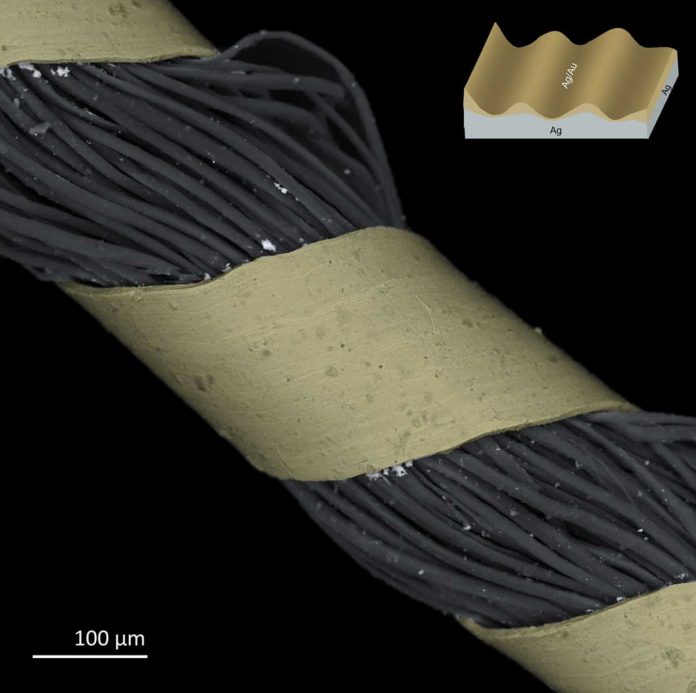Decorative metal threads have been woven into textiles since ancient times to depict wealth and sociocultural significance. Frequently made of gold, silver, or alloys, the procedure of assembling metal threads shifted with assets, culture, and time.
Sadly, these fabrication strategies remain elusive, as little is depicted in written authentic sources, and studies have been constrained by a number of threads, instrument sensitivity or sample preparation method. There is considerable interest in identifying the metals used in these precious threads, as the composition of the metal and gold/silver ratios are possible identifiers of provenance.
A highly sensitive analytical method was developed by scientists to characterize the chemical composition of ancient metal threads using scanning electron microscopy with energy-dispersive X-ray spectroscopy (SEM-EDX) and correlated micro X-ray fluorescence (micro-XRF) mapping.
Caroline Solazzo, Ph.D., who is one of the project’s principal investigators said, “This project began when we were asked to investigate the metal threads of a 14th-century Italian textile using a proteomics-based approach.”
Aleksandra Popowich, Ph.D., who is presenting the work at the meeting said, “Conservation science is a unique area of chemistry research. We are using microscopy techniques that allow us to build a 3-D view of the threads, so we can see things like layering and micro-structure that give us insight into when and how the fibers were made.”
During the study, scientists obtained 30 samples from the Fashion Institute of Technology. The samples originated from Europe, Asia, and the Middle East, and some of them were nearly 1,000 years old.
The kinds of strings were differing; some were strips of metal, others were strips of metal folded over fibers. A significant number of the pieces were religious materials, for example, vestments, showing the social and historical significance of metal thread work.
For detailed observation, scientists developed a strategy that combined energy-dispersive X-ray spectroscopy and correlated micro X-ray fluorescence. The methods altogether provide a high-resolution map of the threads’ elemental composition and thickness. These techniques only required a few micrograms of material, leaving most of the threads intact for future conservation efforts.
The resulting surface images and cross-sections showed that most threads had a combination of gold, silver and sometimes copper or zinc, creating a layered structure that highlighted the intricacy of the craftsmanship.
The scientists discovered that some thread-making techniques differ by culture, yet different techniques did not change a lot after some time. For instance, data from two French threads, one from the sixteenth century and one from the eighteenth century, demonstrated that the process toward moving super-thin metal wires and folding them over a core material was largely unaltered between those years. What’s more, the estimations are taken utilizing this technique line up with notable sources and information from computer simulations.
With this pilot investigation completed, the scientists plan to further develop this strategy to the point where they do not need to destroy a piece of the sample at all. This advance could open up the list of artifacts for study to include those that are too culturally important to damage for the sake of research.
Scientists will present their results at the American Chemical Society (ACS) Fall 2019 National Meeting & Exposition.
